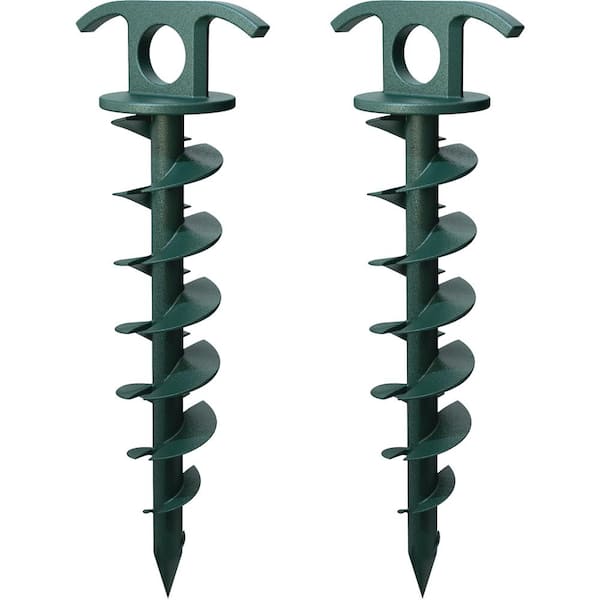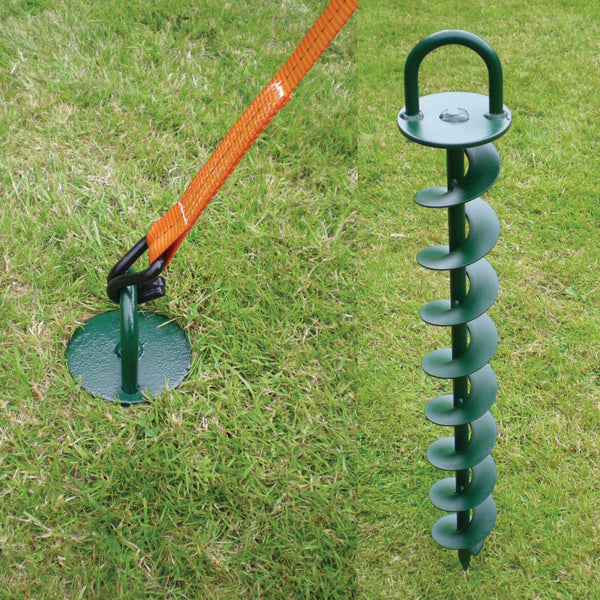An Easy-to-Follow List for Installing and Using a Ground Anchor
An Easy-to-Follow List for Installing and Using a Ground Anchor
Blog Article
Explore the Different Kinds Of Ground Support for Your Next Task
When getting started on a building and construction or landscaping project, comprehending the various types of ground anchors available is crucial to making certain both security and longevity (Ground Anchor). From auger anchors, which succeed in varied dirt conditions, to stake supports created for temporary installments, the alternatives are numerous. Additionally, concrete and screw anchors present distinct benefits in details scenarios, while deadman anchors are customized for applications requiring resistance to lateral pressures. The option of a suitable anchor type can substantially affect the general success of your job, motivating additional expedition right into their respective benefits and applications.

Auger Anchors
Auger supports are a popular selection in different building and landscape design jobs due to their unique style and reliable securing abilities. These anchors include a helical screw-like shaft that is driven right into the ground, permitting a steady and protected hold. The spiral style helps with very easy setup and maximizes resistance against side pressures, making auger supports particularly effective in applications such as secure fencing, momentary frameworks, and disintegration control.
The setup process of auger anchors is fairly straightforward. Auger supports can be quickly removed and reused, which adds to their cost-effectiveness and sustainability.
Among the considerable benefits of auger anchors is their ability to distribute tons uniformly throughout the surrounding dirt, decreasing the risk of soil disruption and decreasing ecological influence. In addition, they are much less prone to heaving or loosening with time compared to typical anchoring techniques. Subsequently, auger supports are an exceptional choice for projects needing trustworthy and durable anchoring options.

Risk Anchors
When it comes to securing frameworks in a range of outside applications, stake supports supply a straightforward and trustworthy solution. These supports are normally constructed from sturdy materials such as steel or aluminum, developed to withstand ecological stress and anxieties while supplying ideal stability. Their basic style permits quick setup, making them an ideal choice for momentary or permanent anchoring needs.
Stake anchors are especially useful in safeguarding tents, covers, and various other light-weight structures against wind and weather condition. They work by being driven right into the ground at an angle, developing a solid hold that withstands pull-out forces - Ground Anchor. The performance of stake supports relies on a number of aspects, including soil kind, dampness material, and the angle of installment
For included protection, many stake anchors include attachment points for ropes or straps, permitting tension changes as necessary. In applications such as landscape design or building, they can effectively support tools or structures on uneven surface. In general, stake supports supply a flexible and cost-efficient remedy for safeguarding various outdoor installments, making them a recommended option for contractors and do it yourself enthusiasts alike.
Concrete Anchors
Concrete anchors give a durable solution for safeguarding frameworks to concrete surface areas, making sure stability and safety in different applications. These supports are crucial for jobs varying from domestic buildings to massive industrial installments. They come in various types, consisting of expansion supports, glue anchors, and undercut supports, each designed for particular tons demands and environmental problems.
Adhesive supports make use of high-strength epoxy or material to bond the support to the concrete, using remarkable load-bearing abilities, especially in cracked concrete situations. Undercut anchors produce a distinct shape within the concrete, giving extraordinary holding power, particularly in applications where tensile tons are widespread.
Picking the appropriate concrete support involves taking into consideration elements such as the weight of the load, the problem of the concrete, and ecological problems. Proper installation methods are crucial to ensure optimal performance and reliability. When performed properly, concrete anchors considerably enhance the architectural stability of numerous jobs, making them essential in contemporary building techniques. Comprehending the details needs of your job will certainly aid in selecting the appropriate sort of concrete anchor for the task.
Screw Anchors

Screw anchors are a functional securing option that can be effectively used in a variety of applications where traditional concrete anchors may not be enough. These anchors contain a helical layout that allows them to be easily driven right into the ground, making them perfect for use in dirt and various other substratums. Their special structure provides exceptional holding power and resistance to pull-out pressures, making them ideal for countless tasks, from landscape design to architectural check my reference assistance.
One of the main benefits of screw anchors is their ease of installation. They call for very little equipment and can commonly be set up without the need for excavation, which conserves both time and labor expenses. Furthermore, screw supports can be eliminated and reused, using a sustainable solution for temporary applications.
Screw anchors are especially useful in areas where dirt problems are testing, such as loose or sandy soils. Their capability to be mounted at differing midsts enables personalization based on particular job needs. Overall, screw supports give a effective and dependable anchoring approach, making them an excellent option for contractors and designers looking for reliable solutions for their projects.
Deadman Anchors
Deadman supports function as a robust option for supporting frameworks in difficult problems, specifically where conventional anchoring approaches might drop short. These anchors include big, heavy objects buried underground, which develop resistance versus side forces. The style normally involves a horizontal part, such as a block of concrete or a metal plate, hidden news in the dirt, to which cable televisions or bands are connected.
The efficiency of deadman anchors depends on their capacity to distribute loads over a larger area, reducing the threat of failing in unpredictable soil problems. They are particularly valuable in applications such as maintaining walls, short-term frameworks, and incline stabilization, where dirt motion can endanger the integrity of the structure.
Installation of deadman supports needs careful preparation to ensure they are put at the right depth and positioning, maximizing their load-bearing capability. While they may call for more labor and product than lightweight supports, their integrity in adverse problems makes them vital for long-lasting projects. Furthermore, deadman anchors are versatile and can be adjusted to different applications, making them a best choice for engineers encountering unique obstacles in their tasks.
Conclusion
Auger supports stand out in imp source varied dirt problems, while stake anchors suit short-term applications. For concrete surface areas, development and glue supports provide reputable choices, and screw supports supply versatility in tough surfaces.
Additionally, concrete and screw supports existing special advantages in certain situations, while deadman supports are customized for applications needing resistance to lateral pressures - Ground Anchor.Auger anchors are a popular choice in numerous building and landscape design jobs due to their special style and efficient securing capabilities. They come in various kinds, consisting of development anchors, glue anchors, and undercut supports, each created for certain lots needs and ecological conditions
Sticky anchors use high-strength epoxy or material to bond the anchor to the concrete, supplying premium load-bearing abilities, specifically in fractured concrete circumstances. Generally, screw supports offer a reliable and efficient securing method, making them an excellent option for engineers and specialists looking for effective options for their jobs.
Report this page